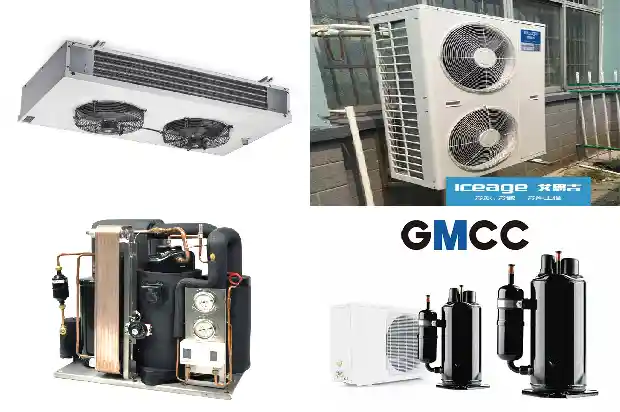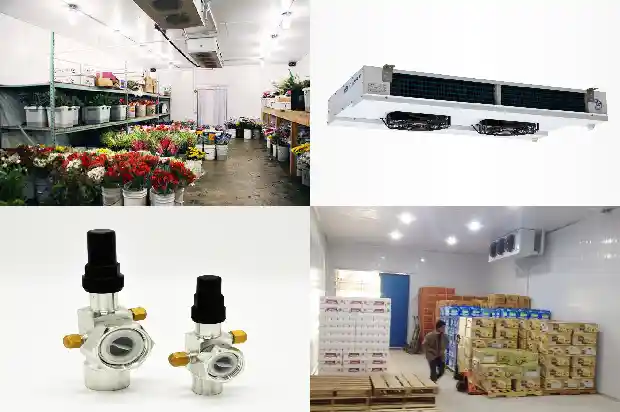Function and Selection of Buffer Tanks
2024-09-14
I. The role of buffer tank
- If the buffer tank is not used, it will lead to frequent start and stop of the main unit. Due to the limited circulating water volume in the loop, the main unit will reach the design temperature in a very short time, and the main unit will stop working. Then, in a very short time, the water temperature will reach the starting conditions of the main unit, and the main unit will start again. Such frequent starts will greatly reduce the service life of the main unit and waste electric energy. Not only a buffer tank is needed, but also the capacity of the tank is better to be larger.
- Efficient defrosting with short defrosting time. When used in severe winter, especially between -3℃ and 5℃, the main unit is obviously frosted. The impact of defrosting on indoor temperature is a very headache problem. Because the unit needs to consume the heat in the pipeline when reverse cooling. If the water volume in the water system is small, then the defrosting time will increase, and the water temperature in the pipeline will be relatively low, and the defrosting effect will not be good. If a buffer tank is installed, then during the defrosting process, because there is a certain temperature in the tank, the defrosting can be completed in a short time, and the heat consumption is also small, avoiding the fluctuation of indoor temperature caused by the defrosting of the main unit. It has a great effect on stabilizing the terminal effect of the system.
- It can ensure the smooth flow of water in the system, complete automatic exhaust completely, and avoid unit failure alarms. We know that when the tank is placed in the return water system, the circulating water enters from the upper part of the tank and discharges from the lower part. In this way, the gas in the water will accumulate in the upper space of the tank. The pressure in the closed system will automatically and forcibly discharge the gas from the upper exhaust valve. In this way, the water inlet of the tank is connected to the water outlet at the bottom of the buffer tank. Because there is no gas, it can not only protect the impeller of the water pump, but also make the system free of gas and ensure the normal operation of the main unit. If there is no buffer tank, then due to the presence of gas, the main unit may sometimes have flow switch failures and high-pressure alarms.
- It can make the sewage discharge of the system more thorough and prevent system blockage. There are a large number of impurities in our system. These impurities will slowly accumulate to the bottom of the buffer tank through circulation. When passing through the Y-type filter, the water quality of the water pump will become better, thereby reducing the cleaning of the Y-type filter.
II. Selection of buffer tank size
Method 1: Buffer tank capacity = water volume required for system stability - actual water volume of the system.
First, calculate the water volume required for system stability, which is set as M1. Then M1 = QT/(CΔT), where Q is the heating capacity of the unit in KW; T is the defrosting time in seconds, C is the specific heat capacity of water, which is taken as 4.
Actual water volume of the system = water capacity per meter of floor heating pipe × total length of system pipeline. If the end is a radiator, the water capacity of the radiator should also be calculated.
Taking a certain brand machine in Beijing as an example, for a 150-square-meter area, equipped with a 7P low-temperature heat pump heating unit with a heating capacity of 20KW, the water volume required by the system is 20×4×60÷(4.187×3)=382(L).
Actual water capacity of the system: Taking the commonly used 20 pipes in the north as an example, the water capacity per meter of 20 pipes is about 0.314L. According to about 5 meters of pipes per square meter, the actual water capacity of the system is about 235L.
Therefore, the volume of the buffer tank to be equipped is: 382L - 235L = 147(L). When actually installed, 150L can be selected to meet the requirements.
Method 2: If you are just starting to do household heating and don't know how to calculate, you can completely use 100L and 150L for unified configuration. That is, regardless of the size of the system, the buffer tank is uniformly configured with 100L or 150L. Usually having these two models on hand is enough to meet most engineering needs.
Method 1: Buffer tank capacity = water volume required for system stability - actual water volume of the system.
First, calculate the water volume required for system stability, which is set as M1. Then M1 = QT/(CΔT), where Q is the heating capacity of the unit in KW; T is the defrosting time in seconds, C is the specific heat capacity of water, which is taken as 4.

Actual water volume of the system = water capacity per meter of floor heating pipe × total length of system pipeline. If the end is a radiator, the water capacity of the radiator should also be calculated.
Taking a certain brand machine in Beijing as an example, for a 150-square-meter area, equipped with a 7P low-temperature heat pump heating unit with a heating capacity of 20KW, the water volume required by the system is 20×4×60÷(4.187×3)=382(L).
Actual water capacity of the system: Taking the commonly used 20 pipes in the north as an example, the water capacity per meter of 20 pipes is about 0.314L. According to about 5 meters of pipes per square meter, the actual water capacity of the system is about 235L.

Therefore, the volume of the buffer tank to be equipped is: 382L - 235L = 147(L). When actually installed, 150L can be selected to meet the requirements.
Method 2: If you are just starting to do household heating and don't know how to calculate, you can completely use 100L and 150L for unified configuration. That is, regardless of the size of the system, the buffer tank is uniformly configured with 100L or 150L. Usually having these two models on hand is enough to meet most engineering needs.
Related Articles
- What Exactly Are the Ten Typical Malfunctions of Air Conditioners?
- What to Do When a Refrigeration Unit Malfunctions?
- Common Malfunctions in the Operation of Cold Storage
- What's the principle and function of air energy?
- Principles of Refrigeration Systems and Functions of Components Explained
- Function and Working Principle of Subcooler
- Introduction to Five Classification Functions of Cold Storage Installation for Refrigeration
- Selection of Bypass Control Valves for Air - conditioning Water Systems
- Reference Points for Selection of Screw - type Chillers
- Selection and Installation of Thermal Expansion Valves
- Introduction to Various Water Tanks in Air - conditioning Systems
- Air Conditioning System: Different Water Tanks
- Air Conditioning System: Different Water Tanks
